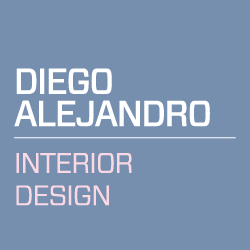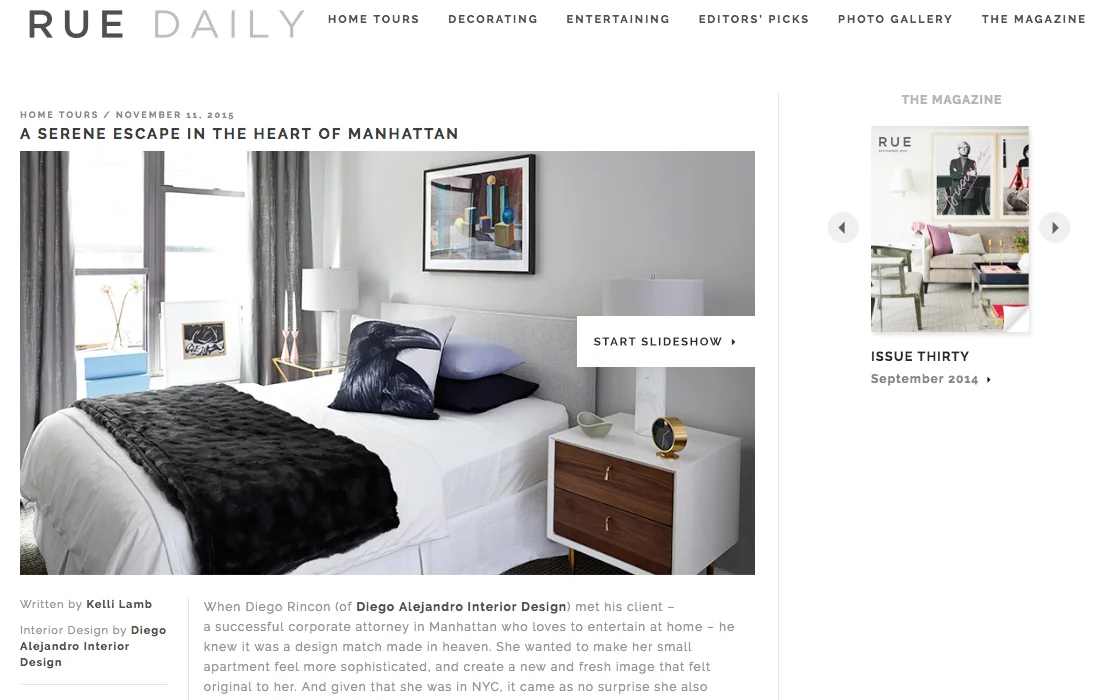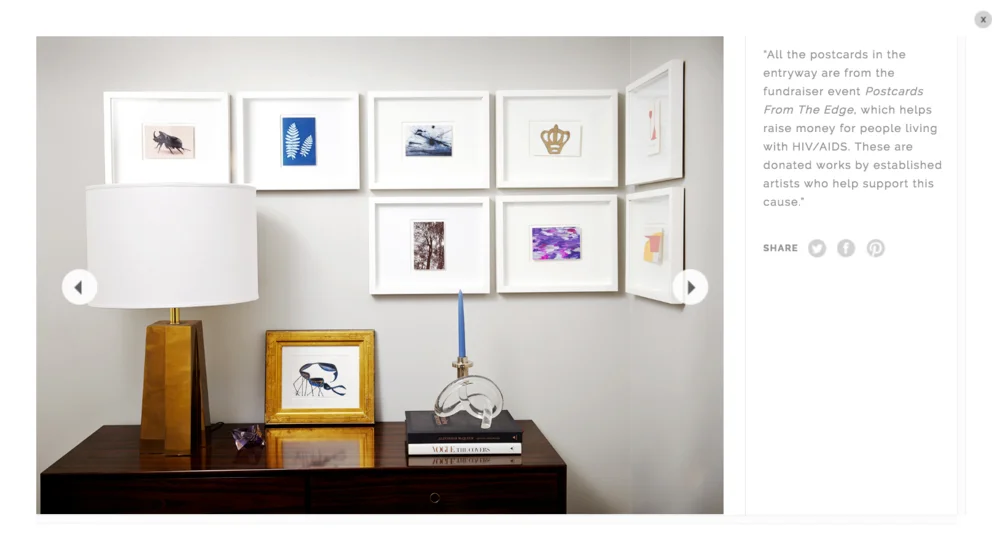A Serene Escape in the Heart of Manhattan
When Diego Rincon (of Diego Alejandro Interior Design) met his client – a successful corporate attorney in Manhattan who loves to entertain at home – he knew it was a design match made in heaven. She wanted to make her small apartment feel more sophisticated, and create a new and fresh image that felt original to her. And given that she was in NYC, it came as no surprise she also wanted the 600 sq. ft. studio to feel a little bit larger. As the project progressed, he realized that she was also craving a place to unwind from the hustle and bustle of the city outside her door. Using his design skills alongside an enviable collection of vintage wares – both from One Kings Lane as well as Diego’s personal reserve – the space feels tranquil and refined. We sat down with the designer to learn more:
This space is beautiful! You mentioned wanting the space to be a “serene escape from the frenzy of the city.” How did you achieve this?
I translated this into creating a backdrop canvas in a very soft tone —not sad or depressive— of grey. To this, I added a combination of new and vintage pieces, along with different textures and materials like the jute, cane, wood and brass. I selected art with a sensitivity towards abstraction and geometry; that could express visual strength without being too dense, or like they were trying too hard.
As the project progressed, I always kept good communication with my client — listening to her recommendations and critique — but always allowing her to see my vision. It’s always important for me not to become a personal shopper, but instead to build the trust that allows the client to rely on me as an attentive and disciplined curator that can bring everything together into one cohesive vision. The end result is certainly very polished and cohesive.
Three elements became very important for the completion of this project: Wood, marble and brass. I wanted to incorporate gold as an alternative color to the restricted or neutral palette of colors for this apartment. Most of the brass lamps seen throughout the space were purchased at flea markets and antique stores. The grey ceramic table lamp on the side table next to the sofa was made by Jane and Gordon Martz in the 60’s (Marshall Studios) and some accessories like the brass sculpture attributed to C. Jeré in brass and displayed on the coffee table was found at an antique store as well.
Do you have a favorite moment or space in the home?
I’ve always loved and enjoyed creating a new look from scratch. Perhaps, one of my favorite parts of this home is the living room and dining room, and how these two spaces co-exist and work together. From the beginning, the concept for the furniture was clean lines with a mix of new with vintage pieces from different periods. I didn’t want to go with just the mid century modern style which is somewhat cliché right now. My style has a very strong bond with modern pieces from the 60’s and the 70’s, but used within a new and original context.
That’s why I suggested that my client acquire the set of 4 dining chairs (circa 1960s) in walnut and cane backs that I sourced from an antique store in California. I found the filigree of the hand-made backs so beautiful and delicate for an apartment in New York; especially in contrast with the dining table with chrome base and glass top that was one of the few pieces I’d kept from the previous design. The same principle applies to the living room, with the hand-braided jute rug, which I think is one of the most beautiful elements in the living room. That’s why I consider the living room and the dining room my favorite rooms, because they have inherent in them a sophistication that is not pretentious.
The industrial designer Rudolf Wolf designed the side chairs in the entryway and the bedroom circa 1955, for the Dutch furniture company Elsrijk. I had them upholstered in two different fabrics (navy blue and pink). Being able to transform them (they were originally upholstered in a yellow fabric), and include them in a more modern context coherently within my design is perhaps one of my favorite moments from this project.
You always create simply beautiful spaces. How do you approach design?
I’ve always trusted my eye, and I work by instinct. From very young, I learned to absorb everything around me and go with my gut. My work has an inherent artistic element, which sets me apart form other interior designers. My design mantra is always distinguishing or discerning between the generic and what really contributes something new and demonstrates creativity.
What do you think every room needs?
As a very good friend says —“creating a home is a very primordial need”. Every room is very personal and unique in its own needs, especially if it’s a home, that it would be difficult to apply the same rule to different rooms.
However, there are things that you should always keep in mind such as the balance between different materials, colors and textures — especially in art and accessories. Always remember that even the smallest elements of a room still bring an aesthetic value to the space. For me, every room needs to be read as a whole, not fragmented.
Source: Rue Magazine November 2015




